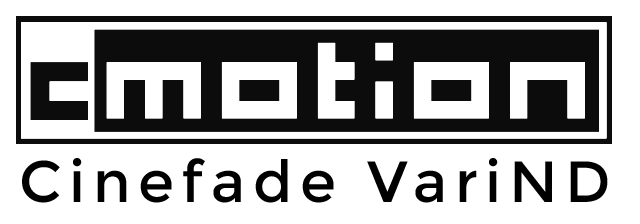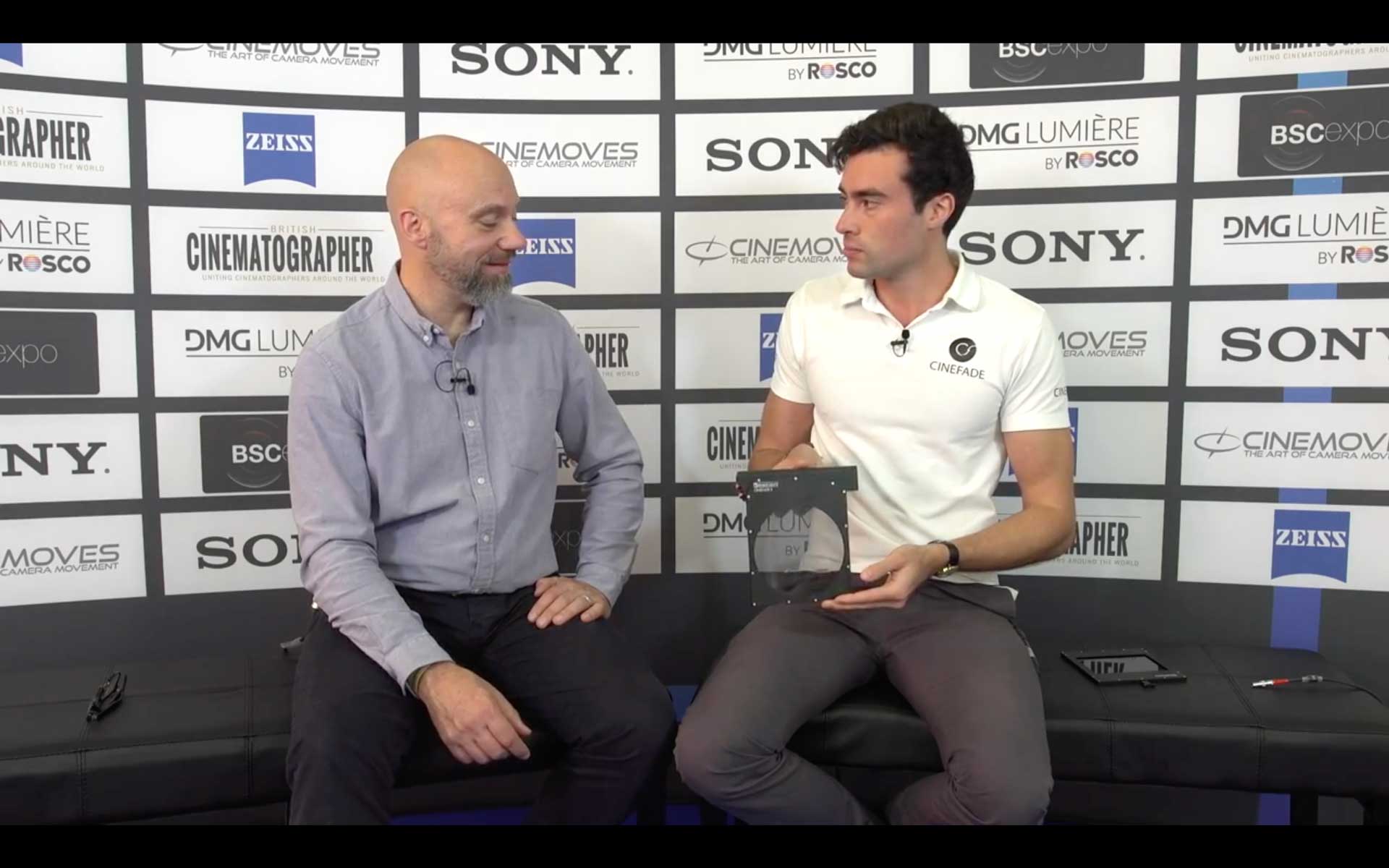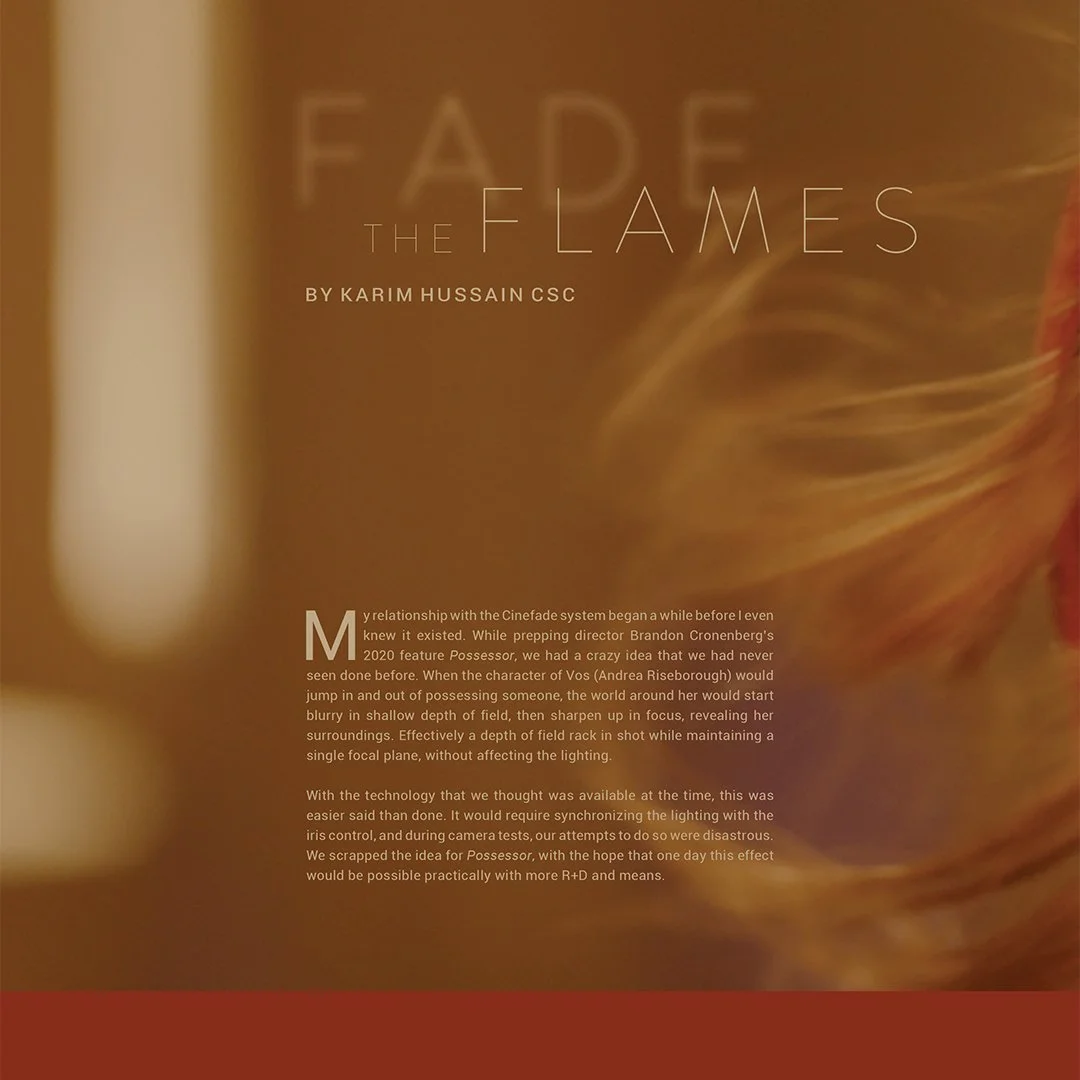When I heard about the Cinefade, I said, "Oh my god, this is a tool that I can actually control exposure with while keeping the iris position where I want it for storytelling purposes", which in my opinion, is really what it's for. The iris position has an enormous effect on how you tell the story because it controls depth of field. I was really excited to use the tool for that reason.
Read MoreLive sport is increasingly turning to cinematic cameras usually seen on a film set to add emotion and drama. But blending those shots with rest of the action is no easy feat.
Read MoreDirector Nano Clow and DP Natasha Duursma challenged themselves to a particularly tricky one-take music video shoot. The idea was to shoot a time lapse with the camera taking an exposure once a second during sunrise. Shooting 16mm film on an ARRI 416 camera, one of the challenges was to maintain a constant exposure during the extreme light change at sunrise.
Read MoreMy relationship with the Cinefade system began a while before I even knew it existed. While prepping director Brandon Cronenberg’s 2020 feature Possessor, we had a crazy idea that we had never seen done before. When the character of Vos (Andrea Riseborough) would jump in and out of possessing someone, the world around her would start blurry in shallow depth of field, then sharpen up in focus, revealing her surroundings. Effectively a depth of field rack in shot while maintaining a single focal plane, without affecting the lighting.
Read MoreCinematographer Shane Hurlbut ASC gives us a behind the scenes look of his newest feature film Tall Girl 2, available to stream on Netflix now. We analyse the Cinefade scenes and get a brief insight into Hurlbut's creative process of using our novel storytelling tool.
Read MoreOne of the first sports leagues to experiment with full-frame sensor cinema cameras during their live-sports broadcast productions is the Spanish professional football league La Liga and we take a look at how the Cinefade VariND helped to match the two different types of cameras and allowed the operators to quickly transition between a cinematic to a broadcast look.
Read MoreThe Sony FX6 and FX9 take the electronic ND feature one step further with bokeh control, which essentially allows operators to mimic the Cinefade variable depth of field effect. The aim of the bokeh control is to automatically change the built-in electronic variable ND filter to maintain a constant exposure when opening up or closing down the aperture.
Read MoreThe Cinefade variable depth of field effect is known as a creative storytelling tool that is often used as a visual effect to accentuate a particularly dramatic moment. The Cinefade system can however also be used as a practical tool to make the DP’s and AC’s job on set easier.
DP Kevin Fletcher used the Cinefade system on a complicated tracking shot to aid his 1AC in achieving critical focus. Starting on an extreme close-up, the depth of field was kept broad to increase the likelihood of maintaining perfect focus. As the camera tracked backwards to a wide shot, the Cinefade was used to imperceptibly decrease depth of field in order to maintain the shallow depth of field look and communicate the character’s sense of isolation.
Read MoreDavid Finchers neuester Netflix-Film »Mank« ist eine Hommage an »Citizen Kane« und an Gregg Tolands Arbeit mit Tiefenschärfe in diesem Jahrhundertwerk von Orson Welles. Dazu setzt Regisseur Fincher mit seinem Kameramann Erik Messerschmidt das von Oliver Christiansen neue entwickelte System Cinefade ein – und ergänzt damit das visuelle Storytelling um ein revolutionäres, bis anhin ungesehenes kreatives Element.
Read MoreListen to a short extract of the More Like This podcast from Netflix Queue in which cinematographer Erik Messerschmidt ASC discusses his and David Fincher's thought process behind using the Cinefade as a storytelling tool.
Read More“We used this tool called the cmotion Cinefade. It’s a motorized variable ND filter that you sync to the iris so we could effectively pull depth of field. It’s quite extreme. You could pull five stops of depth of field. So we could go from a T8 to a 2. That thing kind of lived on the camera. There were times where we’d say, “It’s too much. Let’s look at it at a 5.6.” So you set the iris to a 5.6, the VariND compensates and now you’re looking at the same scene but with less depth of field. So, it was nice to be able to use focus and iris as a storytelling tool instead of just an exposure tool.” - Erik Messerschmidt ASC
Read MorePolarisers are essential on any automotive shoot, allowing the Director of Photography to control reflections on the bodywork and windshield of the ‘hero car’. Automotive productions often use a crane, Russian Arm, Technodolly or car rig to stabilise and move the camera, making the camera inaccessible to the crew. Wireless control of the camera and its accessories is therefore essential and the Cinefade Motorised Polariser enables filmmakers to remotely control a polariser via the cmotion cPro lens control system.
Read MoreBruno had a revelation when he realised that he is able to also play with the depth of field and change it in shot: Starting the scene with a very deep depth of field and as the scene gets more intense he is able to gradually transition to a shallow depth of field.
Read MoreThe Cinefade VariND is available to rent directly from our base in London and from our local rental partners with same-day courier services.
Read MoreThe Cinefade VariND makes it easier for ACs to keep their distance to the camera operator and actors, in addition to avoiding unnecessary contact with the camera and accessories.
Read MoreIn the past, Cinematographers have always been limited to choosing a depth of field that stays consistent throughout the shot. A variable depth of field that creates a sort of focus blur or background blur effect has vast creative applications and the potential of becoming a must-have feature for Lens Control Systems (LCS).
Read MoreDavid wanted to gradually transition from a deep depth of field to a shallow depth of field in one shot to blur the background and isolate the foreground subject. This draws attention to the depth of field effect and communicates to consumers the capabilities of the P10 phone and the artistic value that the feature offers.
Read MoreThe novel Cinefade system synchronises the external iris motor of a professional camera system with a light transmission filter to vary depth-of-field in film.
The same light transmission filter can also be used individually as a motorised variable ND filter that is remotely controlled by a cmotion lens control system to allow for precise and fast exposure changes when the camera is inaccessible or when the creative brief calls for an exact T-stop to maintain a consistent depth-of-field.
Tracking shots at a shallow depth of field in which the camera tracks closer to the subject are notoriously hard for focus pullers to keep sharp, especially if the subject is also moving. A variable depth of field can be used to extend the depth of field when tracking towards the subject to give the focus puller a better chance of nailing critical focus.
Read MoreOur Motorised Polariser can be used independently as a RotaPola that is automatically calibrated, allows users to set marks and can be controlled remotely, which sets it apart from similar products such as the Tiffen Multi Rota Tray or ARRI’s Rota Pola frame.
Read More







































